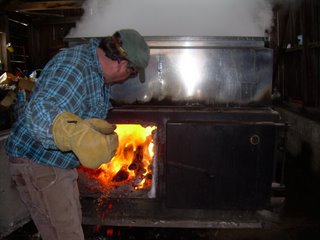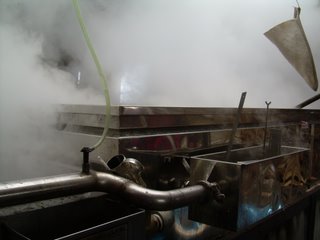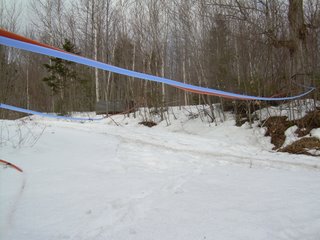Fun in Seward, Alaska!!!
 Me attempting to look bad ass, but the Exit Glacier in the background is way burlier
Me attempting to look bad ass, but the Exit Glacier in the background is way burlier

 "Emergency" Bivuouc (We did it for fun). I put my feet in my pack, sat on a vest and wore all my clothes during the endless Alaskan dusk-dawn
"Emergency" Bivuouc (We did it for fun). I put my feet in my pack, sat on a vest and wore all my clothes during the endless Alaskan dusk-dawn
















 With sport routes ranging from 5.1 to 5.11, one can climb multiple routes in a short amount of time. Usually the Feathers (pictured above) is extremely crowded, with every route occupied. Travis, Krista and I climbed here for two and a half days with seeing only one other party.
With sport routes ranging from 5.1 to 5.11, one can climb multiple routes in a short amount of time. Usually the Feathers (pictured above) is extremely crowded, with every route occupied. Travis, Krista and I climbed here for two and a half days with seeing only one other party. Getting ready for the first route...hmm where are those quickdraws
Getting ready for the first route...hmm where are those quickdraws Krista climbing on day one at the Feathers
Krista climbing on day one at the Feathers Me leading a 5.4, notice the graffiti on the rock, not so cool :(
Me leading a 5.4, notice the graffiti on the rock, not so cool :( Travis stylin' it
Travis stylin' it Travis leading 'Don Coyote', an excellent 5.8 route and one of my favorites at the Feathers
Travis leading 'Don Coyote', an excellent 5.8 route and one of my favorites at the Feathers Me leading 'Don Coyote', this climb never gets old for me
Me leading 'Don Coyote', this climb never gets old for me Me following a 5.9 that Travis led. We were both seriously pumped doing this climb.
Me following a 5.9 that Travis led. We were both seriously pumped doing this climb. Krista following our first route of the day on Day Two
Krista following our first route of the day on Day Two Me leading Skipem' or Clip Em', shortly before I conceded my lead
Me leading Skipem' or Clip Em', shortly before I conceded my lead Travis leading Vantage Point at the Sunshine Wall
Travis leading Vantage Point at the Sunshine Wall Me following Vantage Point
Me following Vantage Point

Chuck's Sugar House. Notice the steam spilling out the top.

Chuck stoking the fire. Sap is boiled in a large pan above a raging fire. It takes about 40 gallons of sap to make one gallon of syrup. The sap is boiled for a period of time until enough of the water content is removed and the sap reaches the proper density.

Me holding maple syrup samples. Starting on the left is Fancy Grade. In the beginning of the season the syrup that is made is usually Fancy and progresses through the season to Grade B Dark. From left to right: Fancy, Light Grade A Amber, Medium Grade A Amber, Dark Grade A Amber, Grade B (cooking syrup). Most people enjoy Fancy or light Grade A. These are sweeter, grade B is darker and is an acquired taste, most Vermonters prefer Grade B.

The pan that the sap is boiled in

Syrup being poured into filters. This syrup will be filtered once more before it is bottled.

This is where all the sap lines converge. You can't tell in this photo, but sap is pouring out of the tubes and draining into a huge (500 gallon) tank. This little window is used to see at what rate the sap is flowing.

Me (looking a bit silly) drinking sap. Maple sap looks and tastes just like water. I always imagined the sap to be viscuous and amber colored, but nope.

Sap lines. The trees are tapped with a plastic spout, which is connected to a piece of tubing. This tubing then connects with larger diameter tubing which runs all the way to the sugar house. Chuck tapped about 1400 trees this year.

Another photo showing the sugar house with the sap lines connecting into the tank. The large black tube is connected to a large vacuum, which helps pull the sap to the tank. The sap is then connected to another tank (located on the right, near the building).
I found all this to be very interesting. I never really knew how maple syrup was made so it was cool to see the process first hand. This morning I went out with Chuck and we checked a bunch of the sap lines for leaks. Squirrels like to knaw on the lines and sometimes the taps crack open, which affects the pull of the vacuum. So we fixed a bunch of the lines and he taught me a lot about sugaring (the technical term for the process of making maple syrup).